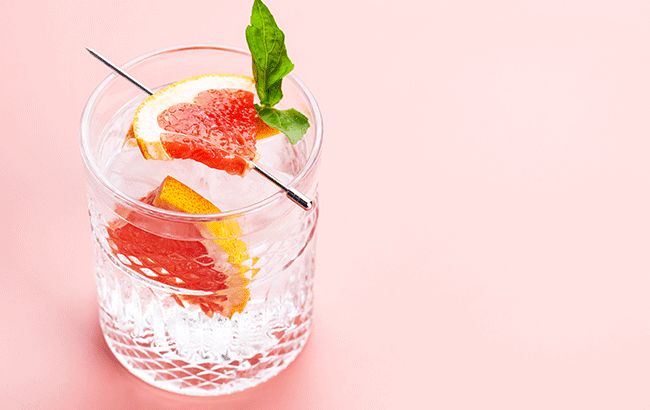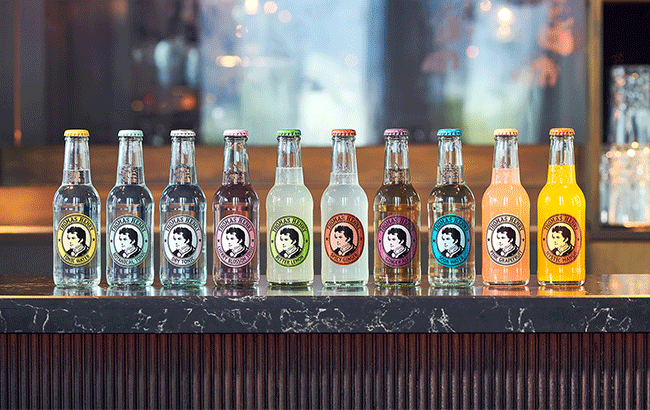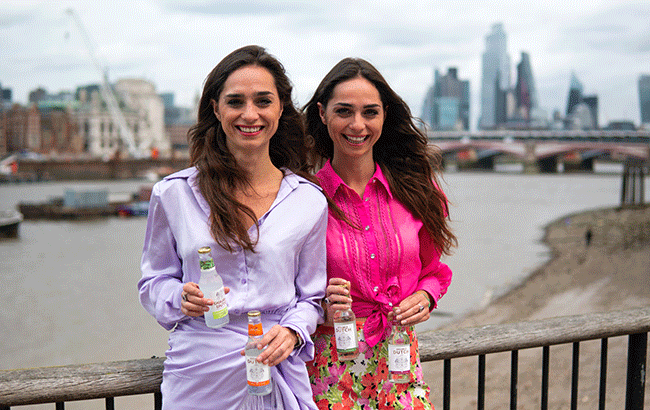The trends leading tonics and mixers
As consumer tastes evolve and RTDs gain popularity, tonics and mixers are striving to maintain market share. We ask brands how they’re adapting.

*This feature was originally published in the November 2021 issue of The Spirits Business magazine.
According to the Fentimans Market Report 2022, mixers took the third spot in the top five soft drinks categories, trailing behind cola and lemonade. As spirits continue to gain share from beer and wine in markets such as the US, in turn mixers have benefitted from consumer demand for long drinks and cocktails as drinkers return to their favourite bars after long periods of closure.
In the UK, the soft drink and mixer market is valued at £1.8 billion (US$2.4bn), with mixers taking a 12% share of the total drinks market, the Fentimans report found.
Things are looking good for tonic water too: the Global Opportunity Analysis and Industry Forecast 2021‐2027 by Allied Market Research found that compared with tonic water’s US$805.4 million market share in 2019, it is projected to reach more than US$1.16bn by 2027 – a compound annual growth rate of 7.3% from 2021 to 2027.
Perhaps it’s a sign of the times. After the past 18 months, consumer thirst has changed notably. A growing trend for longer, lighter serves, as well as a movement towards lower‐ABV cocktails means mixers and tonic waters have a growing opportunity in pubs, cocktail bars and restaurants. There’s also been a shift towards more challenging and interesting flavours, while people are keen to premiumise when it comes to choosing the brands and products they imbibe. With more premium brands coming though in both the mixer and tonic water worlds, it’s a positive shift indeed.
Obstacles ahead
There have, however, been other changes that might cause some challenges. The drive to use less sugar is one of them, while a rise in the popularity of ready‐to‐drink (RTD) products and hard seltzers mean that drinks on the go have never been more innovative.
An increasing number of bartenders are making their own lines of mixers too, and a dislike of quinine by younger generations is worrying news for tonic makers. So how are brands working to get their products into consumers’ hands?
With the reopening of hospitality after months of on‐and‐off lockdowns, positioning your brand to both old and new consumers is key. For The London Essence Company, education and a trade‐friendly new offering are both at the centre of its approach.
“We have always worked with our customer partners to activate the brand in outlets, and that will continue as we move forward,” explains chief marketing officer and cofounder Ounal Bailey. “We’ve provided tools to help (re)train staff (many of whom may now be new to hospitality) to help encourage trade up and second serves… and rolled out new innovations such as the ‘world’s first premium tonic on tap’, which is eye‐catching and draws consumers to the bar.”
Fever‐Tree took note of consumer tastes during the pandemic to make sure its products stood out from the crowd. “As consumers learnt to mix even more drinks at home during lockdown, they are also seeking out more adventurous options as they return to the on‐trade,” explains Fever‐Tree’s UK general manager, Andrew Ronald. “We’re supporting this trend by offering our new, versatile range of sodas and new flavours of tonic. Our sodas go well with the likes of vodka, bitters and more, while our new sweet Rhubarb and Raspberry Tonic elevates a London Dry gin with a sweeter profile.”
Consumer palates may have changed over the pandemic, but the changes in serve styles and convenience are arguably larger challenges for tonic and mixer producers.
According to the Fentimans report, the RTD segments reached a value of £66m (US$90.2m) in the on‐trade in 2020. Of course, most of that year was spent with operators looking for a way to keep up business while their doors were closed, but many bars have continued to offer RTDs even now they’ve reopened.

For Marco Frizzarin, international brand manager for mixer maker Thomas Henry, the RTD market opens opportunities for brands such as his to be involved. He says: “Growth here globally is exceptional. It’s a relevant topic, and we will see what the next one to two years will bring. We are definitely capable of bringing something into the market with high quality and some nice creativity. Nobody needs another RTD G&T.”
Bailey doesn’t see a rise in RTDs as a particular issue for brands such as London Essence; these trends are now gathering more momentum but they are not new. She says they have always been built into the ethos of London Essence from its inception in 2016. Bailey explains: “We see RTDs offering convenience and catering to specific occasions, but for most consumers and customers we still believe that there is an element of versatility that they enjoy through selecting their pairings or the strength of serve, which we continue to champion.”
In with the new
There are some other notable trends that will play a large part in new product development (NPD) for the tonic and mixer market too, namely: lower sugar and lighter serves. Bailey claims London Essence was the first brand to create an all‐light range with no artificial sweeteners, while Frizzarin says Thomas Henry is working to gradually reduce the amount of sugar in its products. Meanwhile, Double Dutch launched its line with low‐sugar content, pre‐empting consumer demands. But it’s the no‐ and low-alcohol opportunity that seems to be driving a lot of the developments in these brands.
“Our latest NPDs are all created with this at the forefront,” says Fever‐Tree’s Ronald. “Our new sweet Rhubarb and Raspberry Tonic is part of our Refreshingly Light range, so is our off‐trade limited edition Damson and Sloe Berry Tonic.” Thomas Henry’s new Botanical Tonic has also been a hit, says Frizzarin. It was created to make low‐ABV serves with products such as vermouth, providing a lighter, alcohol alternative to a G&T.
Double Dutch’s new cocktail sodas have also proved popular, namely its Cucumber Margarita Soda and Bloody Mary Soda. “We launched them with the intention of being paired with Tequila and vodka respectively as cocktail Spritzer serves but we saw lots of on‐trade accounts are now also using them as non‐alcoholic cocktails on their menu (offering a much cheaper solution – thus higher margin – than for non‐alcoholic spirit and mixer pairings),” says Raissa de Haas, co-founder of Double Dutch.
Fever‐Tree’s new Soda Collection was also born out of consumer demand for lower‐ABV drinks (as well as lower calories and lighter tastes).

And what about bartender‐made products? Perhaps the most notable is Coca‐Cola’s Signature Mixer range, which it launched alongside world‐leading bartenders. Do these kinds of products worry brands?
“London Essence has always worked with experts to develop products that meet (and ideally surpass) the expectations of bartenders as the gatekeepers to consumers in the on‐trade,” says Bailey. “We have always collaborated with experts in the industry through our development process, and this is in our DNA as a brand – designed with the trade for the trade.”
For de Haas, the strength of Double Dutch’s flavour combinations make them attractive to bartenders. “Our unexpected flavour pairings work hard for us in the on‐trade as they are distinctive, still not classed as mainstream, and they remain innovative. The likes of Pomegranate & Basil, Cucumber & Watermelon and Cranberry & Ginger work because they are perfect as a spirit‐mixer, great in a cocktail and also perfect to sip solo. They mix with a range of spirits – far beyond gin. For example, our Cranberry & Ginger is perfect with spiced rum or Cognac. Our Pomegranate & Basil, and Cucumber & Watermelon are made without quinine which helps their versatility of use.
“They are also really popular with bartenders who want to create their signature cocktails as they provide bold flavours that create really unique, standout serves – we’ve even had some bartenders make syrups from our mixers.”
For Fever‐Tree’s Ronald, it all comes down to quality and innovation with a central brand ethos for sourcing the very best ingredients – something he believes Fever‐Tree is unmatched on.
So what does the future hold? For Thomas Henry, new designs and packaging formats will be on the horizon, while London Essence has its sights on high‐volume venues with its tonic‐on‐tap product. Double Dutch, meanwhile, is growing internationally, with its second home market being Benelux, and it is entering the US this year, while Fever‐Tree has released its second book, Fever‐Tree Easy Mixing. The future for mixer and tonics, it seems, is bright.
Related news
Inside the ‘spiritual home’ of Scotch
